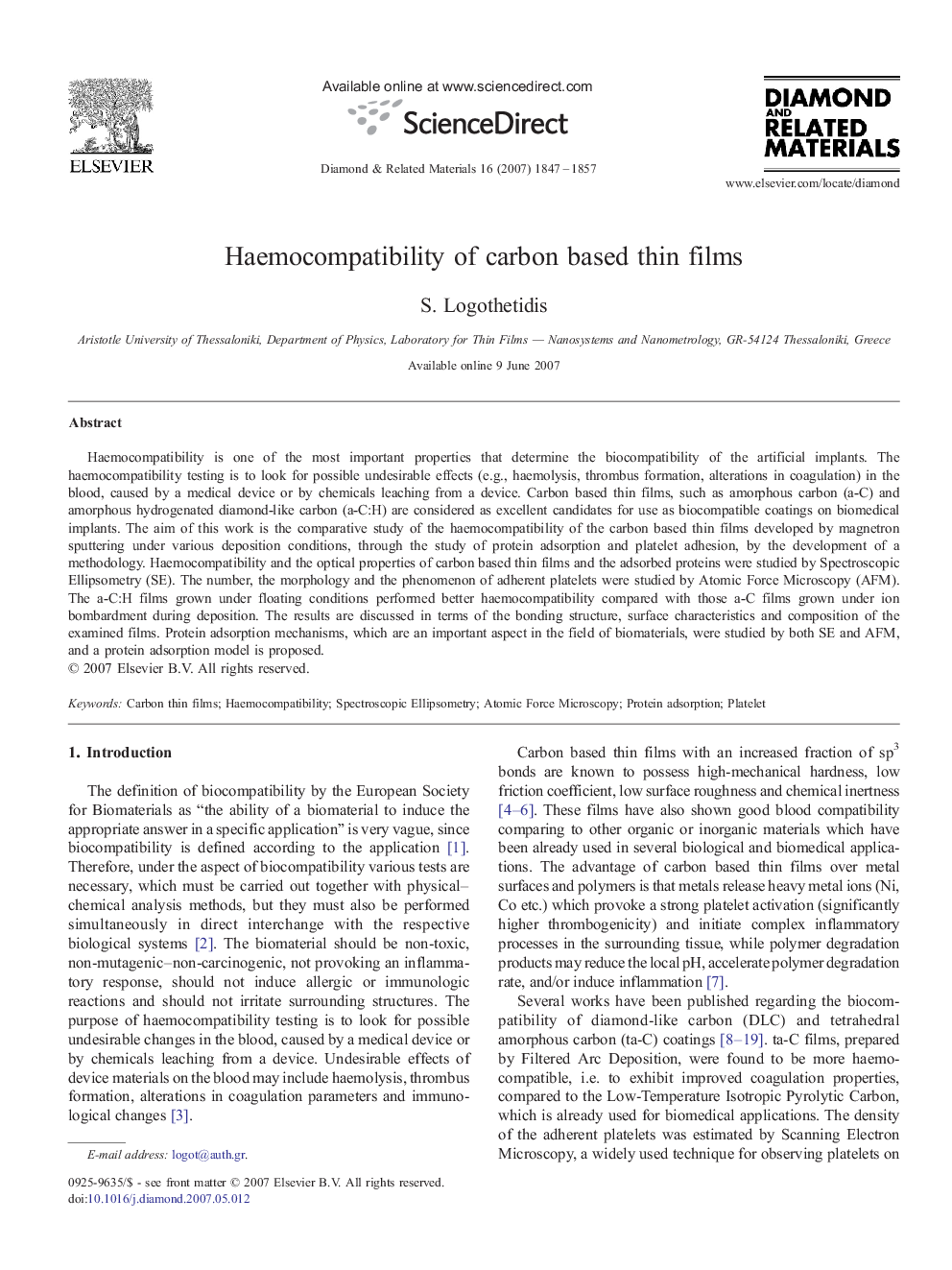| کد مقاله | کد نشریه | سال انتشار | مقاله انگلیسی | نسخه تمام متن |
|---|---|---|---|---|
| 703633 | 891148 | 2007 | 11 صفحه PDF | دانلود رایگان |

Haemocompatibility is one of the most important properties that determine the biocompatibility of the artificial implants. The haemocompatibility testing is to look for possible undesirable effects (e.g., haemolysis, thrombus formation, alterations in coagulation) in the blood, caused by a medical device or by chemicals leaching from a device. Carbon based thin films, such as amorphous carbon (a-C) and amorphous hydrogenated diamond-like carbon (a-C:H) are considered as excellent candidates for use as biocompatible coatings on biomedical implants. The aim of this work is the comparative study of the haemocompatibility of the carbon based thin films developed by magnetron sputtering under various deposition conditions, through the study of protein adsorption and platelet adhesion, by the development of a methodology. Haemocompatibility and the optical properties of carbon based thin films and the adsorbed proteins were studied by Spectroscopic Ellipsometry (SE). The number, the morphology and the phenomenon of adherent platelets were studied by Atomic Force Microscopy (AFM). The a-C:H films grown under floating conditions performed better haemocompatibility compared with those a-C films grown under ion bombardment during deposition. The results are discussed in terms of the bonding structure, surface characteristics and composition of the examined films. Protein adsorption mechanisms, which are an important aspect in the field of biomaterials, were studied by both SE and AFM, and a protein adsorption model is proposed.
Journal: Diamond and Related Materials - Volume 16, Issue 10, October 2007, Pages 1847–1857